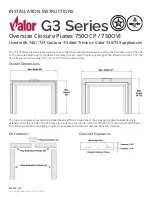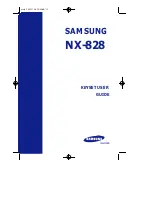
A-4
INSTALLATION
POWER FEED 10 DUAL
A-4
Typical Bench Feeder Connection:
Control cable is connected from the Power Wave 455
output receptacle to the input receptacle on the back
of the Wire Drive.
Typical Boom Feeder Connection:
One control cable is connected from the Power Wave
455 output receptacle to the Control Box input recep-
tacle. A second control cable is connected from the
Control Box output receptacle to the input receptacle
on the back of the Wire Drive.
Multiple Wire Drive Connection:
For proper multiple wire drive connections and DIP
switch settings contact the Lincoln Electric Company,
Customer Service Department.
Non-Typical Boom Feeder Connection:
One control cable is connected from the Power Wave
455 output receptacle to the the input receptacle on
the back of the Wire Drive. A second control cable is
connected from the output receptacle on the back of
the Wire Drive to the Control Box input receptacle.
Control Box Mounted on Power Wave 455:
One control cable is connected from the Power Wave
455 output receptacle to the input receptacle on the
back of the Wire Drive.
See CONTROL AND ELECTRODE CABLE INSTAL-
LATION for cable installation instructions.
CONTROL CABLE SPECIFICATIONS
It is recommended that only genuine Lincoln control
cables be used at all times. Lincoln cables are specifi-
cally designed for the communication and power
needs of the Power Wave 455 / Power Feed system.
The use of non-standard cables, especially in lengths
greater than 25 feet(7.6m), can lead to communication
problems (system shutdowns), poor motor accelera-
tion (poor arc starting) and low wire driving force (wire
feeding problems).
Lincoln control cables are copper 5 conductor cable in
a SO-type rubber jacket. There is one 20 gauge twist-
ed pair for network communications. This pair has an
impedance of approximately 120 ohms and a propa-
gation delay per foot of less than 2.1 nanoseconds.
There are two 12 gauge conductors that are used to
supply the 40 VDC to the network. The fifth wire is 18
gauge and is used as an electrode sense lead.
AVAILABLE CABLE ASSEMBLIES
K1543
Control cable only. Available in lengths of 8',
16', 25', 50' and 100'.
K1544
Control cable and a 3/0 (85 mm2 ) electrode
cable with stud terminal. It is rated at 600
amps, 60% duty cycle and is available in
lengths of 8', 16', 25', and 50'.
K1545
Control cable and a 3/0 (85 mm2) electrode
cable with Twist-Mate™ connector on one end
and a stud terminal on the other. It is rated at
500 amps, 60% duty cycle and is available in
lengths of 8', 16', 25', and 50'.
ELECTRODE CABLE CONNECTIONS
Most welding applications run with the electrode being
positive (+). For those applications, connect the elec-
trode cable between the wire feeder and the positive
(+) output stud on the power source (located beneath
the spring loaded output cover near the bottom of the
case front).
A work lead must be run from the negative (-) power
source output stud to the work piece. The work piece
connection must be firm and secure, especially if
pulse welding is planned. Excessive voltage drops at
the work piece connection often result in unsatisfacto-
ry pulse welding performance.
When negative electrode polarity is required, such as
in some Innershield™ applications, install as above,
except change the output connections at the power
source (electrode cable to the negative (-) stud, and
work cable to the positive (+) stud).
Summary of Contents for IM658-A
Page 63: ...NOTES POWER FEED 10 DUAL...













































